A Central Voltage Protector Better than One for Each Appliance (En / Spn)
19 comments
Few days back I was reading a post by @marivi88, titled D°ltech voltage protector for my whirlpool washing machine / D°ltech protector de voltaje para mi lavadora whirlpool about how good a voltage protector is to avoid damage to our home appliances. The writer exposed the fact that there are quite a few makes in the market from $10 to $20, however the question arises which to select that couples with our Budget. In this case, finding a new one is not probably an easy task since we have to get “value for money”.
Hace unos días leía un post de @marivi88, titulado [D°ltech voltage protector for my whirlpool washing machine / D°ltech protector de voltaje para mi lavadora whirlpool](https://hive. blog/hive-102066/@marivi88/dltech-voltage-protector-for-my-whirlpool-washing-machine-dltech-protector-de-voltaje-para-mi-lavadora-whirlpool#@marivi88/re-ogutierrez-rif73l) sobre lo bueno que es un protector de voltaje para evitar daños en nuestros electrodomésticos. La escritora expuso el hecho de que hay bastantes marcas en el mercado desde 10 hasta 20 dólares, sin embargo surge la pregunta de cuál seleccionar que se acople a nuestro Presupuesto. En este caso, encontrar uno no es probablemente una tarea fácil ya que tenemos que conseguir "valor por dinero".

Type of AC Contactor to be installed / Tipo de Contactor AC para ser instalado
Depending on how many home devices have to be electrically protected in the house, this could be an uphill solution. I say this not because of how difficult they are to be connected, but because of the cost of the protectors altogether. If this happens to be the case, a centralized protector could very well be an option to be taken into account.
Dependiendo de la cantidad de artefactos domésticos que haya que proteger eléctricamente en la casa, esto podría ser cuesta arriba. No lo digo por la dificultad de conexión, sino por el costo de los protectores en su conjunto. Si este es el caso, un protector centralizado podría ser perfectamente una opción a tener en cuenta.
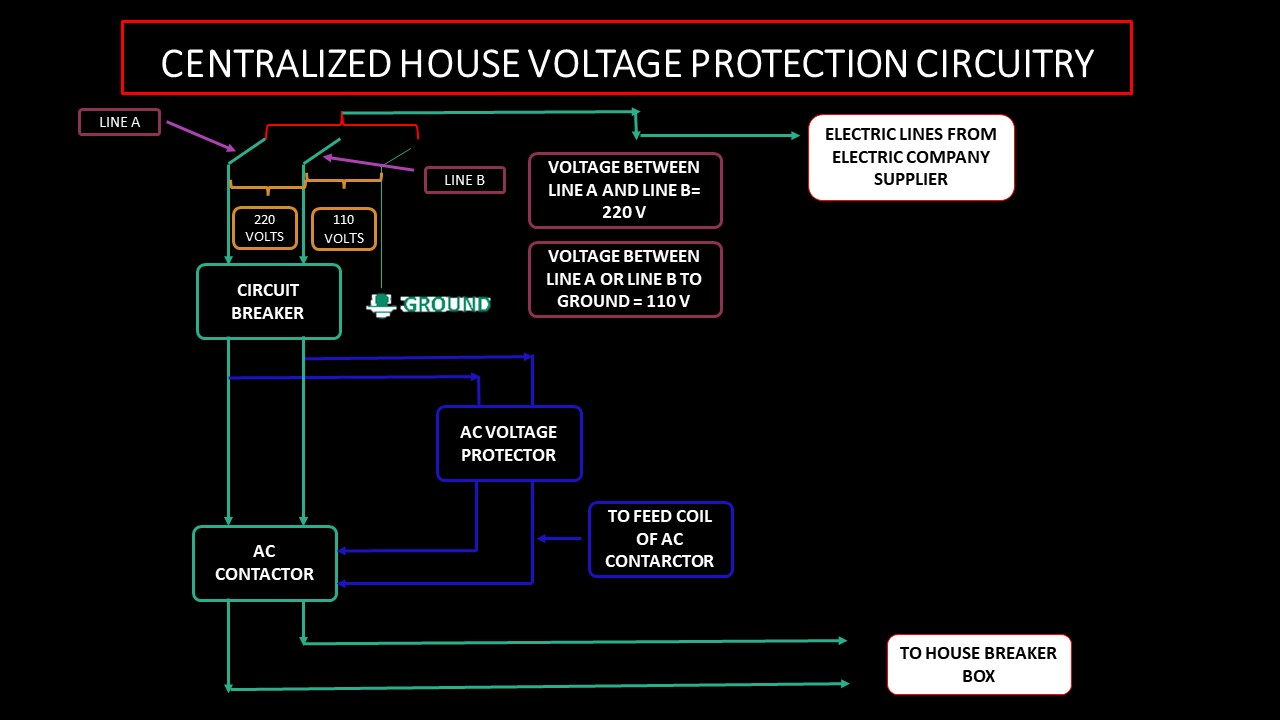
Protection Schematic Cicuit for the house / Esquema eléctrico de protección para la casa
Assuming we do not have any protection, initially what has to be done is to consider how many AC Protectors we require at home to evaluate if putting an AC Voltage Protector centralized arrangement is economically and technically biased. To do that, let us consider the following exercise:
What kind of house appliances do we normally have at home? Let us think of it.
The refrigerator
The washing machine.
Air conditioners, at least two, for the children’s and the main bedroom.
For every TV set. Similar to the air conditioner’s case.
For every computer we may have, assume two as well.
Some people may even have other devices such as a freezer, a Play Station, a router, which may require voltage protection against low voltage levels or pick values. Summing then up it comes out to be 11 AC Voltage Protectors as a whole. That would be, at a cost of $10 each, some $110 altogether. Under normal conditions, i.e. stabilized voltage supplied by the electricity company, a probable life time for the protectors would be between 3 to 5 years. If we live in a zone with risky electrical conditions, this life time could be drastically reduced, say from 1 to 2 years. This, of course, would increment the cost analysis we are performing by 10% at least.
Before analyzing a Centralized AC Protector Arrangement, let us bear in mind that most houses or apartments are fed with 220 volts with a neutral. I mean to say, three conductors, two hot lines, say A and B, that between them have 220 volts, and a neutral that between the latter and every line there is 110 volts. Let us consider a protection circuit when one or the two lines that provide the 220 volts is/are down. If we need to protect every 110 volt line, a similar circuit can be implemented taking into consideration that the features for every part must be for this level of voltage. Having said that, to implement this circuit, the following parts are required:
Suponiendo que no tenemos ninguna protección, inicialmente lo que hay que hacer es considerar cuántos protectores de CA necesitamos en casa para evaluar si instalar una disposición centralizada de protectores de tensión de CA es económica y técnicamente conveniente. Para ello, consideremos el siguiente ejercicio:
¿Qué tipo de electrodomésticos tenemos normalmente en casa? Veamos:
La nevera
La lavadora.
Los aparatos de aire acondicionado, al menos dos, para el dormitorio de los niños y el principal.
Para cada televisor. Similar al caso del aire acondicionado.
Por cada computador que podamos tener, suponer dos también.
Algunas personas pueden tener otros aparatos como un congelador, un Play Station, un router, que pueden requerir protección de tensión contra niveles de baja tensión o picos. Sumando todo esto, resultan 11 protectores de tensión de CA en total. Eso sería, a un costo de 10 dólares cada uno, unos 110 dólares en total. En condiciones normales, es decir, con una tensión estabilizada suministrada por la compañía eléctrica, la vida útil probable de los protectores sería de entre 3 y 5 años. Si vivimos en una zona con condiciones eléctricas de riesgo, este tiempo de vida podría reducirse drásticamente, digamos de 1 a 2 años. Esto, por supuesto, incrementaría el análisis de costo que estamos realizando en un 10% como mínimo.
Antes de analizar una disposición de protectores de CA centralizados, tengamos en cuenta que la mayoría de las casas o apartamentos se alimentan con 220 voltios con neutro. Es decir, tres conductores, dos líneas calientes, digamos A y B, que entre ellas tienen 220 voltios, y un neutro que entre éste y cada línea hay 110 voltios. Pensemos en un circuito de protección cuando una o las dos líneas que proporcionan los 220 voltios se caen. Si necesitamos proteger cada línea de 110 voltios, se puede implementar un circuito similar teniendo en cuenta que las características de cada pieza deben ser para este nivel de tensión. Dicho esto, para implementar este circuito, se necesitan las siguientes piezas:
a.- 2Poles, 220 V, 80 Amp, AC Voltage Contactor, with Normally Open contacts (NO)
Reference price between $40 to $50
a.- Contactor de tensión AC de 2 polos, 220 V, 80 Amp, con contactos normalmente abiertos (NO)
Precio de referencia entre 40 y 50 dólares
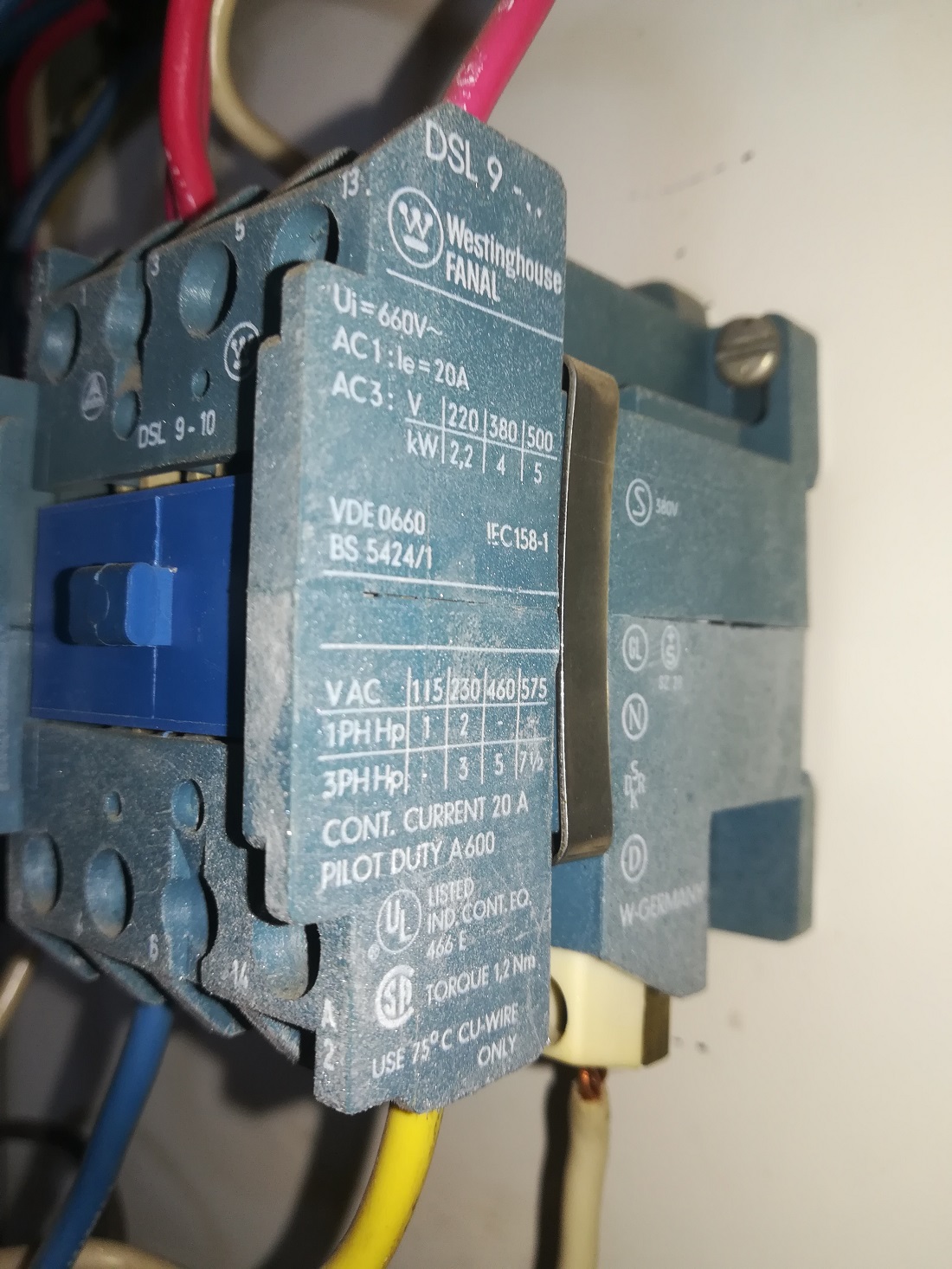
Type of AC Contactor, though this is for 20 Amps/Tipo de Contactor CA, aunque este es para 20 Amps
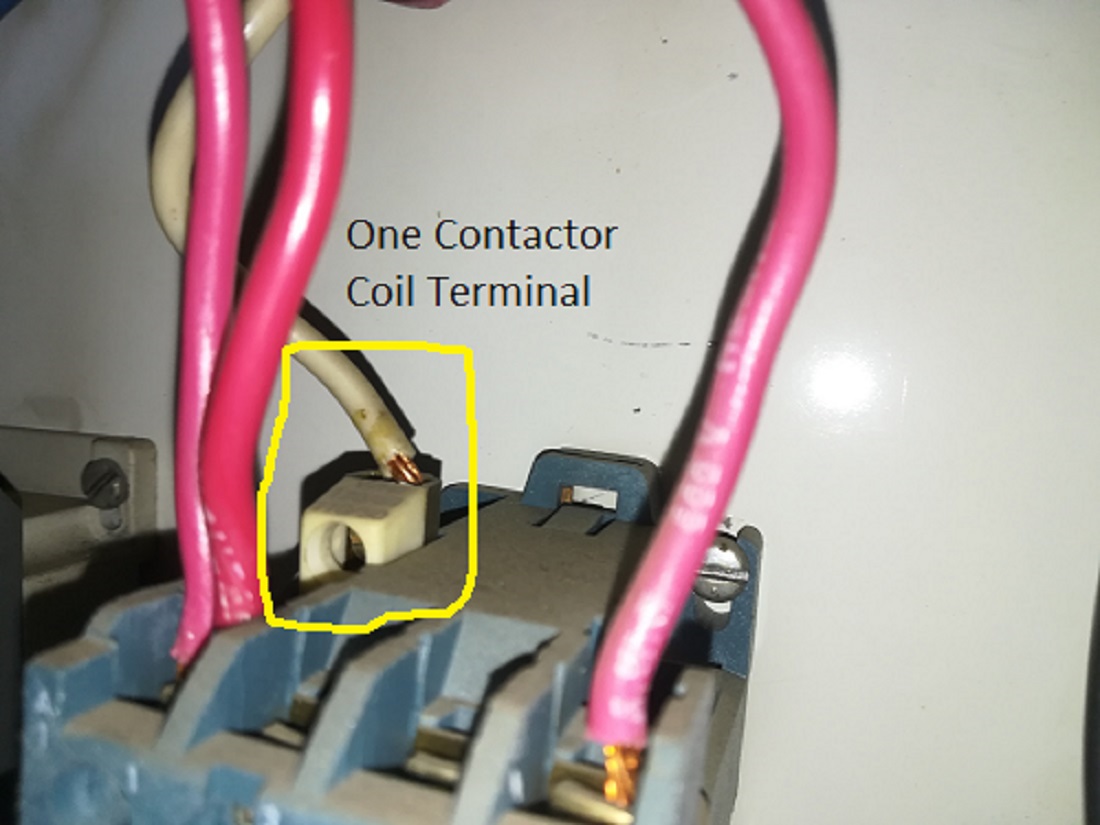
Every Contactor has a coil to a energyze it / Todo contactor tiene una bobina que lo acciona
With capacity to withstand the current being drawn by all the home appliances when in use. If our Breaker Box has 4 breakers installed of 20 amperes each, 20 A, for instance, it would be reasonable to assume that the AC Contactor should tolerate a minimum of 80 Amps. Another feature we must take into account is the level of the voltage contactor coil would need. That should be the same as the voltage being supplied by the electricity company. If it is 220 V, that should be the coil’s voltage.
Con capacidad para soportar la corriente que consumen todos los electrodomésticos cuando están en uso. Si nuestra caja de breakers o disyuntores tiene instalados 4 de 20 amperios cada uno, 20 A, por ejemplo, sería razonable suponer que el contactor de CA debería tolerar un mínimo de 80 amperios. Otra característica que debemos tener en cuenta es el nivel de tensión que necesitaría la bobina del contactor. Debe ser la misma que la tensión que suministra la compañía eléctrica. Si es de 220 V, esa debería ser la tensión de la bobina

4 Breaker Box / Caja de 4 Breakers
b.-2 Poles, 220 V, Main Breaker
Reference price: $20 to $25
This should be of the same capacity as the AC Voltage Contactor.
b.-2 Polos, 220 V, Interruptor Principal
Precio de referencia: 20 a 25 dólares
Debe ser, al menos, de la misma capacidad que el Contactor de Tensión AC.
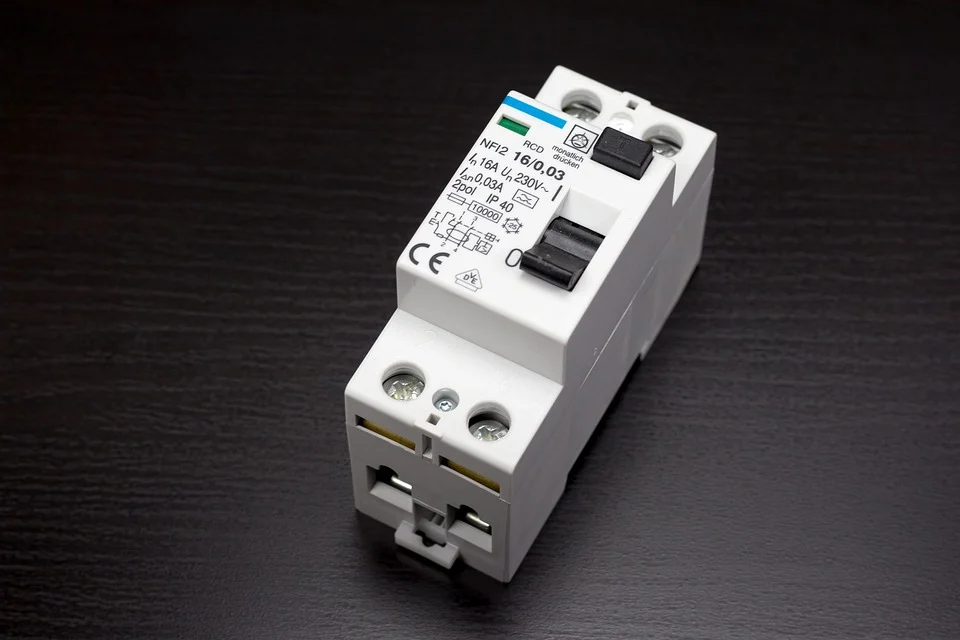
Circuit Breaker
c.- 220V, AC Voltage Protector.
Reference price: $15 to $29 depending on how sophisticated we may want it to be.
The voltage output of the AC Voltage Protector should be the same as the voltage to feed the AC Contactor Coil.
c.- 220V, Protector de Tensión AC.
Precio de referencia: de 15 a 29 dólares dependiendo de lo sofisticado que queramos que sea.
La salida de tensión del Protector de Tensión AC debe ser la misma que la tensión para alimentar la Bobina del Contactor AC.
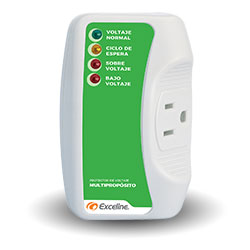
Generating Technology Company, Genteca
Economically, purchasing these items, how much would it come to? Let us put down some figures:
a.- AC Voltage Contactor. Between $40 to $50
b.- Main Breaker. Between $25 ------ $25
c.- AC Voltage Protector. Between $15 to $25
This would come out to be between $80 to $100
Probably there is going to be some other expenses to cover, but in any event, it still would be under the option of installing individual protectors for the house appliances, i.e., $110.
Desde el punto de vista económico, la compra de estos artículos, ¿a cuánto ascendería? Pongamos algunas cifras:
a.- Contactor de voltaje AC. Entre 40 y 50 dólares
b.- Interruptor Principal. Entre $25 ------ $25
c.- Protector de Tensión AC. Entre $15 y $25
Esto saldría entre $80 a $100
Probablemente va a haber algún otro gasto que cubrir, pero en todo caso, seguiría estando por debajo de la opción de instalar protectores individuales para los aparatos de la casa, es decir, 110 dólares
Having a good grasp that to implement this centralized arrangement is economically viable, let us have a look at the schematic to see how it would work:
Considering the circuit, when the one or the two lines that supply voltage is down, in other words, Lines A and/or B, the AC Protector Voltage would also be down. This in turn would de-energize the contactor coil. Doing so, the points or contacts in the contactor would open, and therefore there would be no voltage to the breaker box applied. When the voltage of the two lines A and B returns, then, and only then, the AC Voltage Protector would become energized. Once the time the latter has to guarantee a stabilized voltage, elapses, it would feed the contactor coil with the voltage required for the contactor to close its contacts or points, feeding in turn the breaker box and therefore the circuitry of the house. It should be said that if the voltage of only one line, returns, the AC Protector would not activate since it requires both lines A and B to supply voltage.
Teniendo claro que implementar esta disposición centralizada es económicamente viable, demos un vistazo al esquema para ver cómo funcionaría:
Teniendo en cuenta el circuito, cuando una o las dos líneas que suministran tensión están bajas, es decir, las Líneas A y/o B, la Tensión del Protector AC también estaría baja. Esto a su vez desenergizaría la bobina del contactor. Al hacerlo, los puntos o contactos del contactor se abrirían, y por lo tanto no habría tensión aplicada a la caja del interruptor. Cuando la tensión de las dos líneas A y B vuelve, entonces, y sólo entonces, el Protector de Tensión AC se energizaría. Una vez transcurrido el tiempo que éste tiene para garantizar una tensión estabilizada, alimentaría la bobina del contactor con la tensión necesaria para que éste cierre sus contactos o puntos, alimentando a su vez la caja de breakers y por tanto los circuitos de la casa. Cabe decir que si la tensión de una sola línea, retorna, el Protector AC no se activaría ya que requiere que ambas líneas A y B suministren tensión
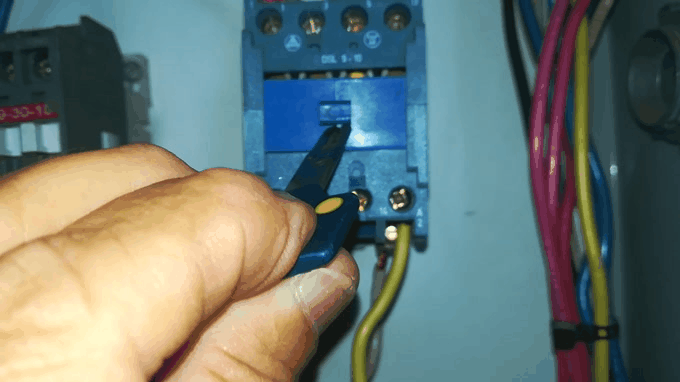
Coil when energized would close the contacts / La bobina cuando se energiza cerrará los contactos
It is my desire that this Centralized Voltage Protection analysis serves the purpose for those of you who are having difficulties with protecting your home appliances….
Es mi deseo que este análisis de la Protección de Tensión Centralizada sirva para aquellos de ustedes que están teniendo dificultades con la protección de sus electrodomésticos....
All pictures are of my own / Todas las fotos son de mi propiedad

Comments